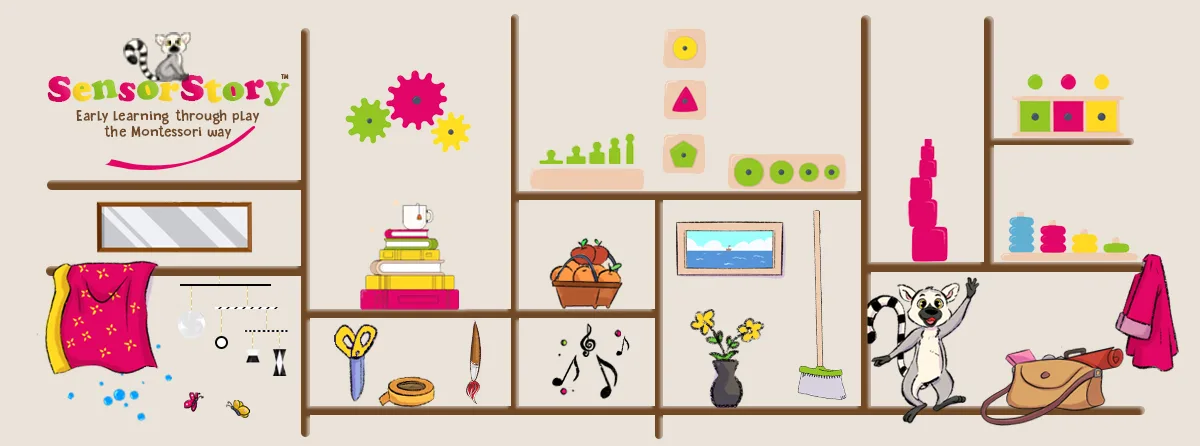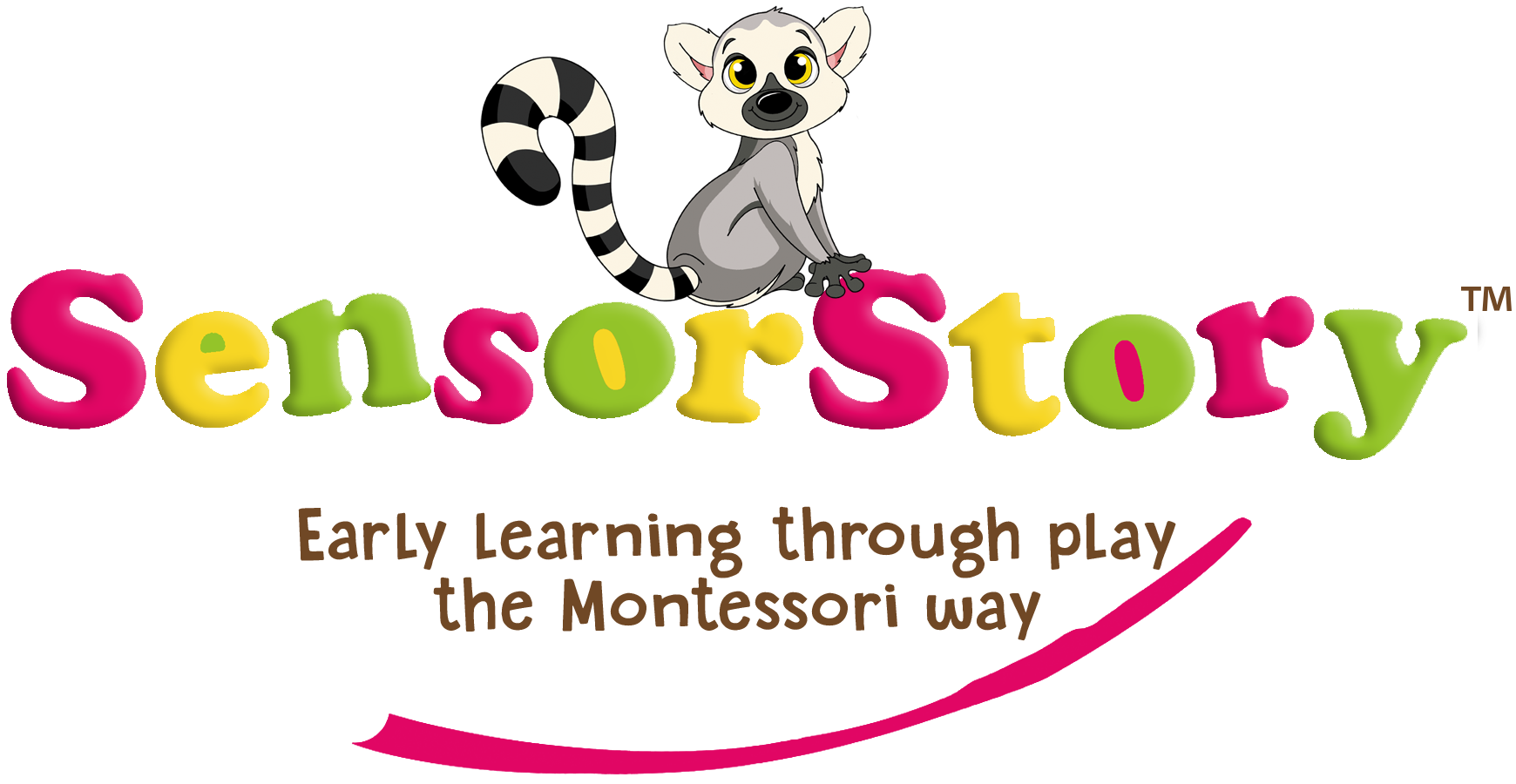We've put together a detailed list of at-home Montessori-aligned activities suitable for a 21-month-old.
Here you will see age-appropriate activities for all areas, in our Ultimate Series Of Activities to try at home, where the emphasis is on providing a prepared environment and allowing the child to actively engage in self-directed learning.
So what is my child working on mastering at this age?
Between the 21-24 month age, your toddler is mastering refined motor skills, advancing language acquisition, enhancing independence, developing social skills, exploring the environment with increased organisation, and engaging in more intricate sensory experiences.
At this developmental stage, your toddler is still a sensorial learner, so making hands-on activities is essential. These activities should focus on enhancing their fine motor skills, advancing language proficiency, encouraging self-expression through arts and crafts, challenging gross motor movements, and expanding practical life tasks with increasingly complex steps as their concentration improves.

1. Practical Life:
* Self dressing: create a child-sized 'wardrobe'; a low, open shelved unit or simple rail to place a small selection of accessible clothes for your toddler to chose from, and place a mirror at their height for self-reflection.
* Snack preparation: offer a child-sized age-appropriate knife for cutting soft fruits or vegetables like bananas or cucumbers.
* Care of self: encourage independent hand and face washing. Have a soft towel available for them to use by themselves.
* Care of plants, teaching gentle care and observation of plant growth. Have small potted plants with a watering can in your toddler's environment and model how to water the plant and clean the leaves with a soft brush or cloth.
* Care of environment: place a child-sized mop and small cloth in their environment for wiping spills.
* Simple gardening activities such as planting seeds or digging.
* Observation: observe your toddler carefully and respectfully, without interrupting or distracting them, to learn about their needs, interests, and abilities, offering activities that are challenging yet achievable to foster their sense of independence and self-confidence.
2. Eye-Hand Coordination:
* Threading activities: offer large wooden beads or pasta shapes for threading onto a string.
* Sorting activities: offer bowls or trays with various items to sort - objects with more complex characteristics for sorting such as shape or texture.
*Discs on serpentine dowel: serpentine dowel made of metal with one to three discs.
* Challenging stacking activities.
* Puzzles: offer simple jigsaw puzzles with larger pieces or puzzles that involve matching shapes or colours.
* Throwing: you can use soft balls or bean bags and throw and catch between one another.
3. Movement:
* Walking challenges: set up safe walking challenges, such as walking on straight lines or along a curved path.
* Throwing: you can use soft balls or bean bags and throw and catch between one another, or throw into colour matching containers or hoops.
* Pikler triangle allows your toddler to explore "climbing" in a safe way. A climbing triangle designed to help your toddler develop their gross motor skills, strength, balance and coordination. Allows them to learn their own boundaries and promotes freedom of movement.
* Walking on the line: use masking tape or chalk to create lines on the floor and encourage walking or balancing along the lines.
4. Sensory Exploration:
* Simple cooking or baking activities involving smelling and tasting for sensory exploration.
* Encourage your toddler to explore different scents by providing them with a variety of smelling materials like flowers, herbs, or spices. You can also create a scent basket filled with different smelling objects like lavender sachets, cinnamon sticks, or citrus peels.
* Messy play: offer messy play opportunities with materials like finger paint, pudding, or mud. Explore textures and sensations through hands-on activities, using descriptive words for the sensations experienced. Click to read more on the benefits of Messy Sensory Play, and for a homemade finger paint recipe.
* Sensory baskets: create baskets with a variety of safe textures for your toddler to touch and explore.
* Touch and feel matching games: place various pair.
* Texture boards: create a cardboard boards with different textures (smooth, rough, soft) encouraging tactile exploration and vocabulary building (e.g., "smooth," "soft").
5. Language Development:
* Offer a collection of realistic books of interest to your toddler, relating to their life.
* Create opportunities for language-rich interactions; the toddler’s absorbent mind eagerly learns all of the vocabulary we offer them and are only limited by our own knowledge.
* Vocabulary baskets: fill a basket with objects and name each object as you take it out, helping your toddler to develop their vocabulary.
6. Culture:
* Nature walks: take outdoor walks to observe and collect items from nature, using magnifying glasses to explore details like leaves, rocks, or insects. Discuss the importance of caring for the environment.
* Have multicultural books such as picture books featuring diverse cultures and traditions, discussing different clothing, customs, and daily life. Promote inclusivity and appreciation for cultural diversity.
* Seasonal exploration: discuss the changes in seasons and their characteristics, engaging in seasonal activities like planting seeds or observing nature. Explore seasonal books and pictures.
* Science: Montessori learning materials for science include magnifying glasses, magnets, and prisms. You can also use books about astrology and biology.
7. Music Exploration:
* Singing and vocal play: sing simple and familiar nursery rhymes with repetitive melodies, using hand movements or gestures to accompany the songs. Encourage your toddler to mimic sounds.
* Egg shakers: offer wooden egg shakers filled with rice or small beads and use gentle shaking motions to create soft sounds, exploring different shaking speeds and rhythms.
* Instrument identification: play a game where your toddler identifies instruments by sound. Use recordings or live demonstrations of various instruments, discussing the characteristics and families of instruments.
* Have small hand drums or bongo drums to explore tapping and drumming with hands or soft mallets, introducing basic drumming patterns.
* Musical stories: use musical instruments to accompany a storytelling session. Choose stories with rhythm or musical elements and encourage your toddler to use instruments to express parts of the story.
8. Art and Self-Expression:
* Drawing and colouring: provide chunky crayons for an easy grip and large sheets of paper for drawing. Encourage simple scribbling and exploration of marks.
* Make homemade puffy paint by mixing equal parts shaving cream and PVA glue with a few drops of food colouring.
* Collage and crafting: offer child-safe glue, scissors and assorted craft materials such as coloured paper, yarn, pom poms and fabric scraps.
* Water colour painting, include a cloth to wipe up spills.
9. Social Interaction:
* Community helper exploration: introduce the concept of community helpers through books or activities, discussing different roles in the community, for example doctor, firefighter etc.
* Playdates: Arrange playdates with peers to encourage social interaction.
* Playing with blocks is a great way to help your toddler develop their social skills. You can use blocks to promote teamwork and collaboration by building structures together.
* Turn-Taking Games: Engage in simple games that involve taking turns.
* Modeling Social Behavior: Demonstrate and encourage sharing and cooperation during play.
* Model and teach simple manners and greetings
10. The Whole Child Development:
* Attend our weekly SensorStory Baby and Toddler Montessori parent-child sensory classes! Follow this link to enrol your infant here.
We hope we have given you some inpiration for activities to do with your 21-month-old!
Remember, follow the child, adapting activities based on your observation of your toddler's developmental stage and individual interests. The key in a Montessori environment is to provide your child with real, purposeful, and age-appropriate tools and materials that allow them to engage in activities independently and at their own pace.
Disclaimer: Adult supervision is required for any activity suggested by SensorStory. Please follow any directions and/or warnings on the labels(s) of any materials used during such activity & be aware of any potential choking hazards or allergies.
Click here to see our
Activities To Do With A 2 Year Old FAQ.
